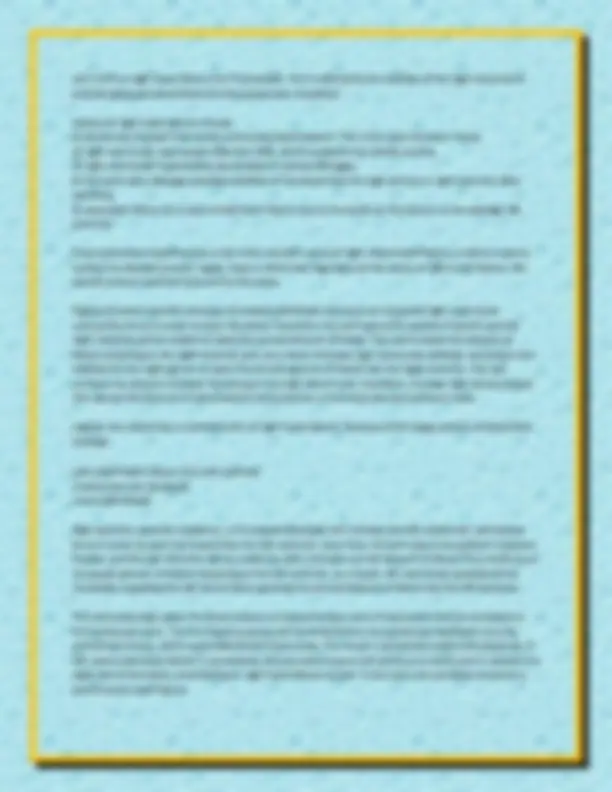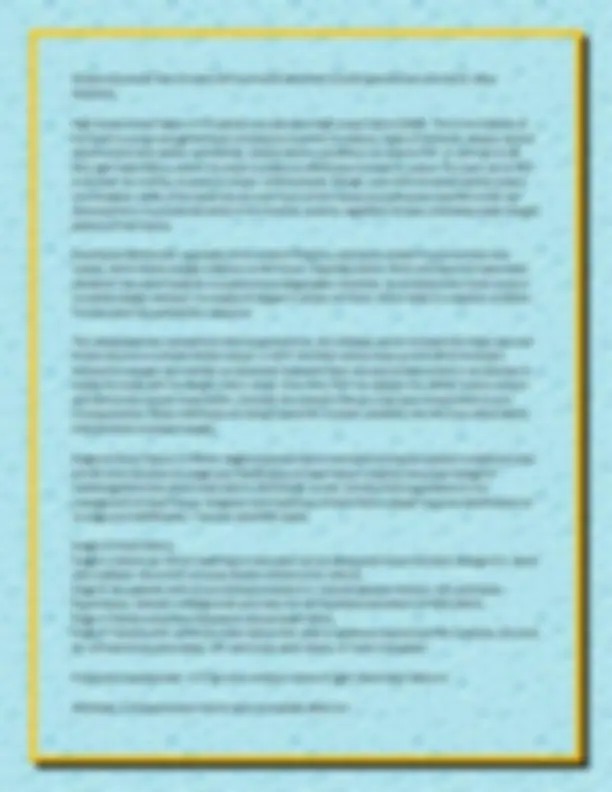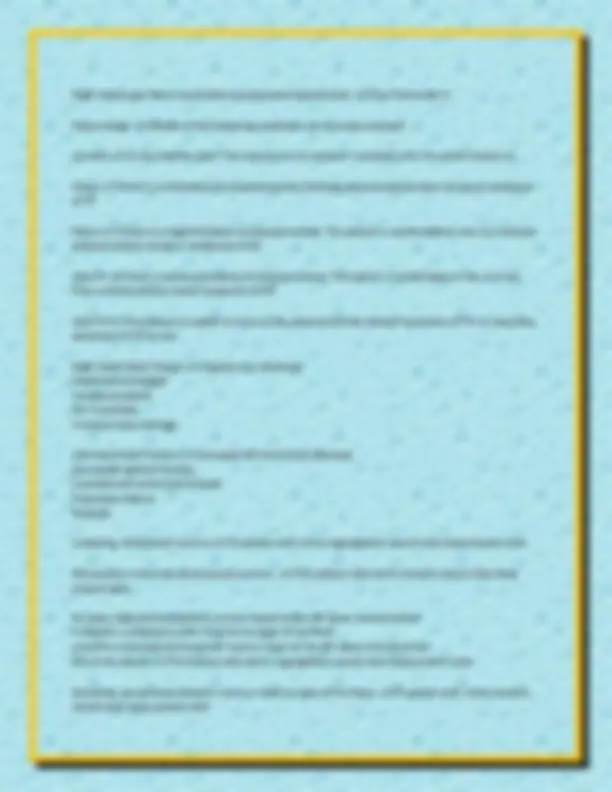





Study with the several resources on Docsity

Earn points by helping other students or get them with a premium plan


Prepare for your exams
Study with the several resources on Docsity

Earn points to download
Earn points by helping other students or get them with a premium plan
Community
Ask the community for help and clear up your study doubts
Discover the best universities in your country according to Docsity users
Free resources
Download our free guides on studying techniques, anxiety management strategies, and thesis advice from Docsity tutors
NR 507 Cardiovascular Exam 2024
Typology: Exercises
1 / 6

This page cannot be seen from the preview
Don't miss anything!




NR 507 Cardiovascular Cardiovascular disorders ✔✔Cardiovascular disorders are prevalent in primary care. Many of the disorders develop over several years, due to the risk factors to which individuals have been exposed. For each disorder covered in this unit, a discussion of risk factors will be included. For the concepts covered below, clinical application of each disease will be provided so that students can understand the importance of pathophysiology in diagnosing and treating the disease. Prerequisite knowledge: For this content, you should have a basic knowledge of cardiac anatomy; know the differences between the right and left sides of the heart, in terms of structure and function. You should also possess solid knowledge of the unidirectional blood flow through the heart. For example, deoxygenated blood arrives to the right side of the heart, travels to the pulmonary arteries to release CO2 and pick up oxygen. At this point, the oxygenated blood is carried from the lungs through the pulmonary veins to the left side of the heart where it eventually reaches the aorta to carry oxygenated blood out to the body organs. The cellular physiology related to cardiac contraction is another important basic concept to know, as electrolytes (sodium, potassium and calcium) play a major role in muscle contraction. Finally, the concepts of preload, afterload, and contractility are essential to understand, as all of these can be affected in some way when a person has cardiovascular disease. What is Coronary Artery Disease (CAD)? ✔✔CAD is considered the leading cause of death in the United States (U.S.). It is the result of longstanding atherosclerosis. Atherosclerosis begins with damage to the endothelium. It is the endothelium, under normal functioning that maintains balance between the vasoconstrictive and vasodilation actions, prevents platelets from aggregating and control of the production of fibrin. When the endothelium becomes damaged, our familiar inflammatory processes occur. Macrophages attach to the endothelium, setting up phagocytosis; plaque formation and vasoconstriction also occurs marking the beginning of atherosclerosis. The plaque lesions located in the vessels become enlarged which allows the plaque to progress within the enlarged vessel lumen. The plaque lesion disrupts normal blood flow and causes thrombus formation which can be triggered by cardiac risk factors such as elevated LDL, cholesterol, smoking and diabetes. So, why is this a problem? Well, the plaque takes decades to develop in the coronary arteries. With mild disease, blood flow can get through the arteries and the patient is asymptomatic. Overtime, this build up can lead to narrowing which results in decreased oxygen supply. When atherosclerosis reaches a clinically significant level, the patient will begin to experience angina. Further progression of the disease will result in acute coronary syndrome (ACS), formerly known as myocardial infarction (MI). The major risk factor for the development of CAD ✔✔The major risk factor for the development of CAD is family history. There is a 50% higher risk for individuals to develop heart disease if they have a first degree relative (especially father) or sibling who has suffered from ACS or premature cardiac death (< age 55 years). Lifestyle also impacts risk, especially tobacco use and even secondhand smoke exposure.
It is always important for the NP to stress smoking cessation with all patients who smoke tobacco, in order to decrease the patient's risk for CAD. Sedentary lifestyle will also increase one's risk for developing CAD. Physical inactivity can lead to overweight (BMI 25-29.9) or obesity (BMI 30 and above). Male gender, hypertension, Elevated total cholesterol, elevated low-density lipoprotein (LDL), and/or decreased high-density lipoprotein (HDL) are also risk factors, as well as diabetes mellitus. Myocardial ischemia ✔✔Myocardial ischemia is the cause of his chest pain. Ischemia occurs when the heart's oxygen demand exceeds supply. For this patient, he experienced his chest pain during exercise. Ischemia occurred because of the narrowing of at least one coronary artery by atherosclerotic plaques. The result is the narrowing of the diameter of the coronary artery. This reduces oxygenated blood flow through the artery that leads to an insufficient oxygen supply to the heart. Adenosine is also released that stimulates sympathetic nerve fibers that causes atrial and ventricular contraction. In addition, sympathetic stimulation occurs at the upper thoracic dorsal roots of the spinal cord that leads to the arm pain. C.G. has several risk factors contributing to the development of CAD: ✔✔1) male
Disease processes that increase left ventricular afterload include hypertension and aortic valve disorders. High Output Heart Failure ✔✔A patient can also have high-output failure (HOF). This is the inability of the heart to pump enough amounts of blood to meet the circulatory needs of the body, despite normal blood volume and cardiac contractility. Several diverse conditions can lead to HOF. In contrast to left and right heart failure, where the heart is unable to effectively increase its output, the heart can in HOF to at least, for a while, increase its output. Unfortunately, though, even with increased cardiac output, the metabolic needs of the body are not met. Some of the causes and processes involved in HOF are discussed here. As presented earlier in this module, anemia, regardless of type, ultimately impair oxygen delivery to the tissues. Nutritional deficiencies, especially of the vitamin thiamine, decreases cardiac muscle function and output, which impairs oxygen delivery to the tissues. Hyperthyroidism, fever and sepsis increase basal metabolic rate which leads to increased tissue oxygenation demands. As conditions like these result in increased oxygen demand, the supply of oxygen is simply not there, which leads to a hypoxic condition. This activates the sympathetic response. The catecholamines, epinephrine and norepinephrine, are released, which increases the heart rate and stroke volume to increase cardiac output. In HOF, the heart cannot keep up with all of the body's demand for oxygen nor maintain an extended increased heart rate and stroke volume in an attempt to supply the body with the oxygen that it needs. Over time, HOF can deplete the cardiac muscle reserve and lead to low-output heart failure. Consider the patients that you may have encountered in your nursing practice. Many individuals are being treated for multiple conditions like the ones stated above that demands increased oxygen. Stages of Heart Failure ✔✔When diagnosing heart failure and determining the patient's treatment plan, the NP must consider the stage and classification of heart failure using the American College of Cardiology/American Heart Association's (ACC/AHA) current clinical practice guideline on the management of heart failure. Diagnosis and treatment of heart failure always requires identification of its stage and classification. They are identified below: Stages of Heart Failure Stage A: Patients at risk for heart failure who have not yet developed structural heart changes (i.e. those with diabetes, those with coronary disease without prior infarct). Stage B: Are patients with structural heart disease (i.e. reduced ejection fraction, left ventricular hypertrophy, chamber enlargement) who have not yet developed symptoms of heart failure. Stage C: Patients who have developed clinical heart failure. Stage D: Patients with refractory heart failure that require advanced intervention (for example, the need for a biventricular pacemaker, left ventricular assist device, or heart transplant). Pulmonary hypertension. ✔✔The most common cause of right-sided heart failure is: Afterload. ✔✔Hypertension has its most immediate effect on:
Right ventricular failure secondary to pulmonary hypertension. ✔✔Cor Pulmonale is: Hemorrhage. ✔✔Which of the following conditions can decrease preload? increase ✔✔In the healthy heart, the response to an increase in preload is for the stroke volume to Class I ✔✔there is no limitation of physical activity; Ordinary physical activity does not cause symptoms of HF. Class II ✔✔there is a slight limitation of physical activity. The patient is comfortable at rest, but ordinary physical activity results in symptoms of HF. Class III ✔✔there is marked limitation of physical activity. The patient is comfortable at rest, but less than ordinary activity causes symptoms of HF. Class IV ✔✔The patient is unable to carry on any physical activity without symptoms of HF, or they have symptoms of HF at rest. Right Sided Heart Failure ✔✔Jugular vein distention Hepatosplenomegaly Peripheral edema Cor Pulmonale Tricuspid valve damage Left Sided Heart Failure ✔✔Increased left ventricular afterload Decreased ejection fraction Increased left ventricular preload Pulmonary edema Dyspnea a blowing, holosystolic murmur ✔✔A patient with mitral regurgitation would most likely present with Mid-systolic crescendo-decrescendo murmur. ✔✔The patient with aortic stenosis would most likely present with: An early, high-pitched diastolic murmur heard at the left lower sternal border A diastolic rumbling murmur heart at the apex of the heart A systolic crescendo-decrescendo murmur heart at the left upper sternal border (All of the above) ✔✔The patient with aortic regurgitation would most likely present with: Rumbling, decrescendo diastolic murmur heard at apex of the heart. ✔✔A patient with mitral stenosis would most likely present with